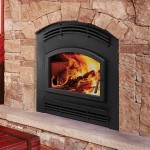Dry Stack Stone Veneer Fireplace: Aesthetics, Installation, and Considerations
A fireplace serves as a central architectural element in many homes, providing both warmth and a focal point for gathering. The aesthetic appeal of a fireplace is often significantly enhanced by its surround, and dry stack stone veneer offers a compelling option for homeowners seeking a natural, textured, and visually striking design. This article will explore the characteristics of dry stack stone veneer, the installation process, and essential considerations when integrating it into a fireplace design.
Dry stack stone veneer mimics the appearance of a traditional dry stone wall, where stones are carefully fitted together without the use of mortar. This creates a rugged, dimensional surface with varying depths and textures, offering a rustic yet sophisticated aesthetic. Unlike natural stone, veneer is significantly lighter and easier to install, making it a practical choice for both new construction and renovations.
Aesthetic Versatility and Design Considerations
Dry stack stone veneer offers remarkable versatility in terms of aesthetic styles. The color, size, and shape of the individual stones can be selected to complement a wide range of interior design themes. For a contemporary space, a veneer featuring clean lines, consistent color palettes, and minimal variation can be chosen. Conversely, a more rustic or traditional setting would benefit from a veneer with irregular shapes, varying colors, and a pronounced texture.
The visual impact of dry stack stone veneer can be further customized by adjusting the height of the fireplace surround, the width of the stone pieces, and the overall layout. Taller surrounds can create a sense of grandeur and drama, while shorter surrounds may be more appropriate for smaller rooms. The choice of grout (if used, although traditionally dry stack is mortarless) and its color also influence the final appearance. A contrasting grout can accentuate the individual stones, while a matching grout creates a more seamless and unified look. Although the term "dry stack" implies no mortar, some installers may choose to use a minimal, recessed mortar for added stability, particularly on taller fireplace surrounds.
Beyond the stone itself, consider how the fireplace will interact with the surrounding architectural elements. The mantle, hearth, and any adjacent built-in features should harmonize with the stone veneer. A wooden mantle, for example, can add warmth and contrast to the stone, while a slate hearth provides a grounding element that complements the natural material.
Lighting is another crucial consideration. The textured surface of dry stack stone veneer can create interesting shadows and highlights, particularly when illuminated by natural light or strategically placed artificial lighting. Uplighting, downlighting, and spotlights can all be used to accentuate the stone's texture and create a visually appealing focal point.
Installation Process and Best Practices
The installation of dry stack stone veneer involves several key steps, requiring careful planning and attention to detail. While some homeowners may opt for professional installation, skilled DIYers can successfully complete the project with proper preparation and tools.
Surface Preparation: The first step is to prepare the surface that will receive the veneer. This typically involves ensuring the existing wall is structurally sound, clean, and level. If the wall is constructed of drywall, it should be reinforced with a layer of cement board. Cement board provides a stable and moisture-resistant substrate for the stone veneer.
Applying the Adhesion Layer: After the cement board is installed, a scratch coat of mortar is applied. This layer provides a textured surface for the stone veneer to adhere to. The scratch coat should be scored horizontally to create a better bond.
Laying the Stone Veneer: The most crucial part of the installation process is carefully laying the stone veneer. This involves selecting stones of varying sizes and shapes and fitting them together in a way that creates a natural and visually appealing arrangement. Since dry stack is traditionally mortarless, each stone must be carefully placed and secured to ensure a tight fit and a stable bond. Although no mortar is visible on the face, a small bead of adhesive can be used on the back of each stone to ensure it adheres to the scratch coat.
Cutting the Stone: A wet saw with a diamond blade is essential for cutting the stone veneer to fit around corners, edges, and other architectural features. Safety glasses and ear protection should be worn when operating the wet saw.
Maintaining Level and Alignment: Throughout the installation process, it is essential to maintain level and alignment. A level can be used to ensure that the stones are properly aligned, and spacers can be used to create consistent gaps between the stones if a grouted look is desired (though this negates the "dry stack" aesthetic). Even without visible grout, maintaining consistent spacing allows for expansion and contraction of the materials, preventing cracking and other issues.
Sealing (Optional): While not always necessary, sealing the dry stack stone veneer can provide added protection against moisture and staining. A breathable sealant specifically designed for stone veneer should be used. The sealant should be applied according to the manufacturer's instructions.
Crucial Considerations for Fireplace Applications
When using dry stack stone veneer for a fireplace surround, several crucial considerations must be addressed to ensure safety and compliance with building codes. Fire safety is paramount, and the materials used must be able to withstand the high temperatures generated by the fireplace.
Non-Combustible Materials: Building codes typically require that the materials surrounding a fireplace be non-combustible. Dry stack stone veneer itself is generally non-combustible, but the underlying substrate and any adhesives used must also meet this requirement. Cement board is a commonly used non-combustible substrate. Ensure any adhesive used is rated for high-temperature applications and meets the relevant building codes.
Clearances to Combustible Materials: Maintaining proper clearances between the fireplace and any combustible materials, such as wood framing or mantles, is crucial for preventing fires. Building codes specify minimum clearance distances that must be observed. These distances may vary depending on the type of fireplace and the materials used in its construction. Consult local building codes and the fireplace manufacturer's instructions for specific clearance requirements.
Hearth Extension: The hearth extension, which is the non-combustible area in front of the fireplace opening, provides a safe landing zone for embers and sparks. The size and material of the hearth extension are typically specified by building codes. Dry stack stone veneer can be used to clad the hearth extension, providing a cohesive and visually appealing design. However, ensure the veneer is securely attached and that the hearth extension meets the required dimensions.
Ventilation: Proper ventilation is essential for ensuring the safe and efficient operation of a fireplace. The chimney or flue must be properly sized and constructed to allow for the complete removal of combustion gases. Inspect the chimney regularly for any obstructions or damage. Consult with a qualified chimney sweep to ensure the chimney is in good working order.
Professional Inspection: Before using a newly installed or renovated fireplace, it is highly recommended to have it inspected by a qualified professional. A professional inspection can identify any potential safety hazards or code violations and ensure that the fireplace is operating safely and efficiently.
In summary, dry stack stone veneer offers a visually appealing and versatile option for enhancing the aesthetic of a fireplace. The installation process requires careful planning, attention to detail, and adherence to building codes. By understanding the characteristics of the material, following best practices for installation, and addressing critical safety considerations, homeowners can create a beautiful and functional fireplace that serves as a focal point in their homes for years to come.

Dry Stack Vs Mortar Joints The Cultured Stoners

Dry Stack Vs Mortar Joints The Cultured Stoners

Dry Stack Stone Veneer Fireplace Traditional Living Room Chicago By Hx Home Solutions And North Star Houzz Au

Dry Stack Stone Veneer Fireplace Traditional Living Room Chicago By Hx Home Solutions And North Star Houzz Au

Dry Stacked Stone Fireplace With Raw Edge Cypress Mantel Fireplaces Surround Corner

Dry Stacked Wall Cladding Adelaide Veneer Stone

Dry Stacked Stone Fireplace Fireplaces Natural Remodel

Stone Veneer Stack Midnight Mountain View

23 Stacked Stone Fireplace Ideas Sebring Design Build

Dry Stack Stone Fireplaces Superb Craftsmanship Centuries In The Making








